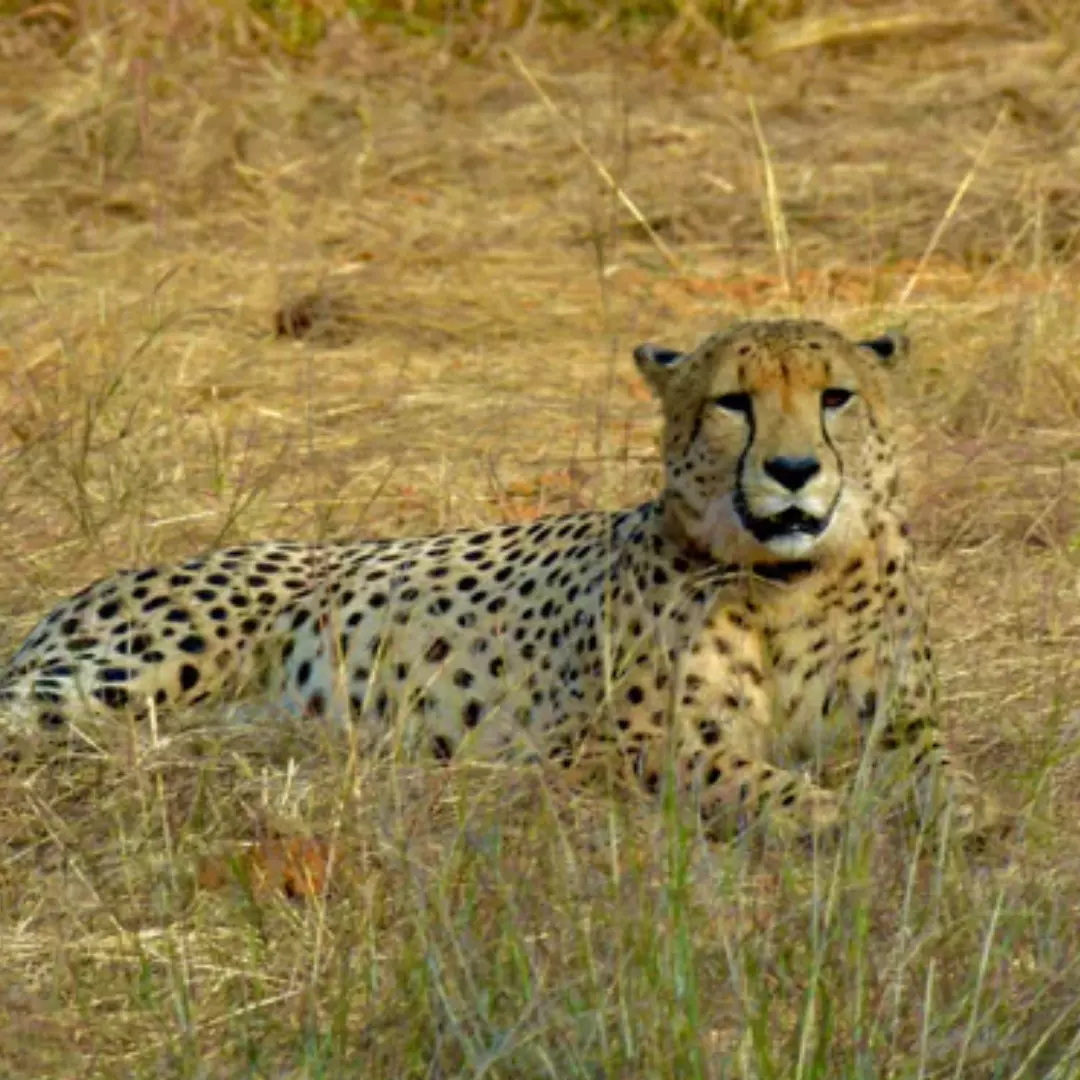
Image Credits: NDTV
Another Cheetah Found Dead At Kuno National Park, 9th Death In Last 5 Months
Writer: Ankita Singh
A literature lover who likes delving deeper into a wide range of societal issues and expresses her opinions about the same. Keeps looking for best-read recommendations while enjoying her coffee and tea.
India, 2 Aug 2023 10:49 AM GMT
Editor : Al Arafat Sherfuddeen |
Passionate writer about current events, politics and happenings nationally and globally. An agent of communal harmony and an ardent Arsenal fan.
Creatives : Ankita Singh
A literature lover who likes delving deeper into a wide range of societal issues and expresses her opinions about the same. Keeps looking for best-read recommendations while enjoying her coffee and tea.
Another cheetah has died in the Kuno national park this morning, taking the number of big cat deaths there to nine in about five months.
Another cheetah has died in the Kuno National Park, bringing the total number of big cat deaths in the park to nine in just five months.
The deceased cheetah, named Dhatri (Tiblisi), was found dead in the park, and authorities are conducting a post-mortem to determine the cause of death. Currently, 14 cheetahs (seven males, six females, and a female cub) are kept in enclosures known as bomas in the Kuno National Park. These cheetahs are being closely monitored by wildlife veterinarians and an expert from Namibia. Two female cheetahs were out in the open, and one of them was found dead, reported NDTV.
The unfortunate deaths of nine cheetahs, including three cubs, have dealt a significant blow to the Centre's cheetah reintroduction program, which was initiated by Prime Minister Narendra Modi. In September of the previous year, the national park had seen the reintroduction of 20 adult cheetahs from Namibia and South Africa, and four cubs had been born there since then.
The recent deaths of two male cheetahs last month, Tejas and Suraj, have raised concerns. Tejas' autopsy revealed that he had been unable to recover from traumatic shock after a violent fight with a female cheetah.
The other cheetah deaths occurred due to various reasons, including kidney ailment, cardio-pulmonary failure, injuries from a violent interaction during a mating attempt.
These deaths have put a major setback to the government's efforts to reintroduce cheetahs to the region. Two cheetah cubs had also died of "extreme weather condition and dehydration" on May 25.
Earlier, the Centre had denied any lapses behind the deaths of the six cheetahs. "There is no lapse behind any of the cheetah deaths. Even in the case of the deaths of the three cheetah cubs, global wildlife literature clearly mentions 90% per cent infant mortality among cheetahs," said an official.
In May, South African wildlife expert Vincent van der Merwe had predicted more cheetah deaths and said that the reintroduction project is going to see an even higher mortality, when the cheetahs would try to establish territories and come face to face with leopards and tigers at the park.
Eight cheetahs had landed in Gwalior from Namibia’s capital Windhoek a on September 17, 2022 which was also PM Modi’s 72nd birthday. Referring to the cheetahs as ‘India’s guests’, he said that India will try its best to follow international guidelines in nurturing them. He thanked the government of Namibia for its assistance in the project.
Wild Cheetah Population
The wild cheetah population is primarily concentrated in Africa, with the majority found in the southern and eastern regions of the continent. Unfortunately, their range has significantly decreased over time, with the current range representing only about 10% of their historic territory. In eastern Africa, the cheetah's territory has been reduced to a mere 6% of its original size, encompassing areas in Tanzania, Kenya, Ethiopia, South Sudan, and Uganda. In southern Africa, their range has been less impacted but still reduced to 22% of its original state, covering parts of countries such as Zambia, South Africa, Zimbabwe, Angola, Mozambique, Botswana, and Namibia.
Small populations of cheetahs can also be found in the Sahara Desert, although they are extremely scarce, with approximately 2 to 3 cheetahs for every 3,900 square miles. Unfortunately, the global cheetah population continues to decline. Over the past 16 years, for instance, the population in Zimbabwe has decreased by a staggering 85%. In west and central Africa, research indicates that cheetahs are now extinct in 11 out of the 15 protected areas.
In Iran, there is an even smaller population of cheetahs, known as the Asiatic or Iranian cheetah. This subspecies has experienced a severe decline over the last 50 years. In the 1970s, there were around 200 individuals, but by the 1990s, the population dropped to between 50 and 100. Currently, there are approximately 82 individuals left. The historic range of this subspecies once extended across the Arabian Peninsula, the Caspian region, Pakistan, and India. Today, it has been spotted in about 14 protected areas located in the eastern region of Iran. Due to its reduced territory and critically small population, the Asiatic cheetah has been listed as critically endangered by the International Union for Conservation of Nature (IUCN).
Also Read: Recent Cheetah Deaths Due To Natural Causes, Says Government Agency
 All section
All section














